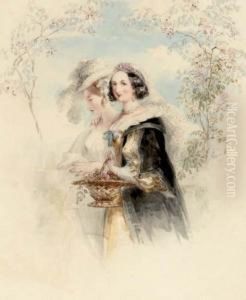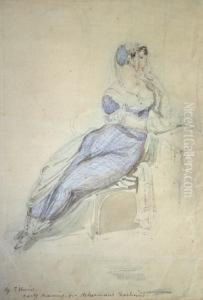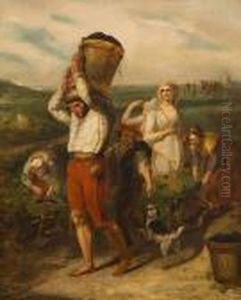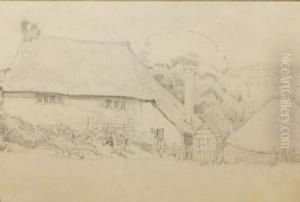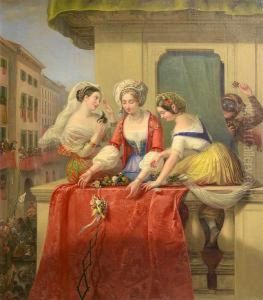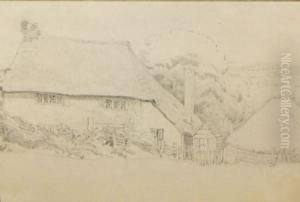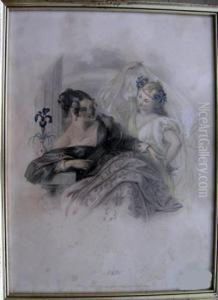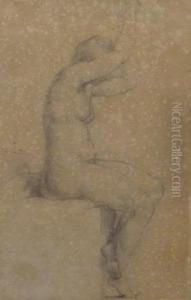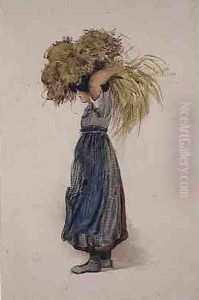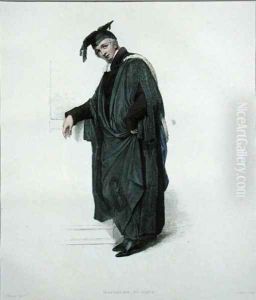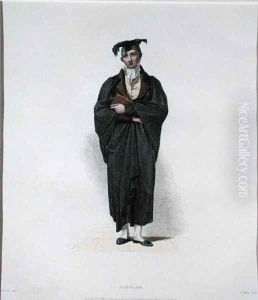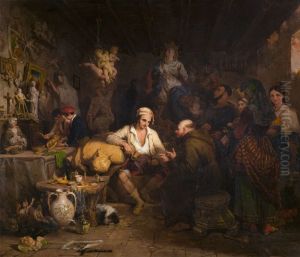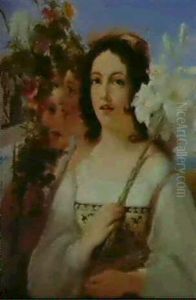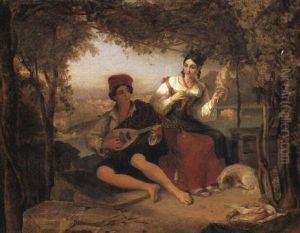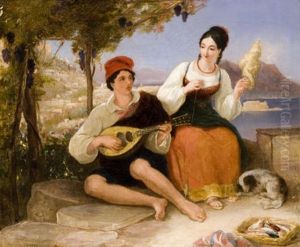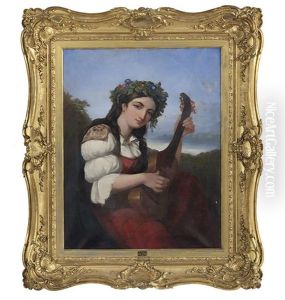Thomas Uwins Paintings
Thomas Uwins was an English painter and illustrator born on February 24, 1782, in London. He initially studied at the Royal Academy Schools and began his career as an engraver and illustrator for books. His early works were influenced by the Dutch and Flemish schools of painting, but he gradually developed his own style, known for its bright colors and attention to detail.
Uwins traveled extensively in Italy from 1824 to 1831, which greatly influenced his painting style. During his time in Italy, he was particularly inspired by the works of Raphael and the Italian Renaissance, which is reflected in his use of light and composition. His Italian experiences also led him to embrace subjects from everyday life, especially those depicting the rural and peasant scenes.
Upon returning to England, Uwins enjoyed considerable success. He was elected as an Associate of the Royal Academy in 1833 and became a full Royal Academician in 1838. His paintings during this period often featured scenes of rural life, with a focus on capturing the customs and costumes of the people he depicted. These works helped to popularize genre scenes in Victorian England.
Uwins also held several prestigious positions, including the Keeper of the National Gallery in London and the Surveyor of the Queen's Pictures. His later years were marked by poor health, which eventually led to his resignation from these positions.
Thomas Uwins passed away on August 25, 1857, in London. Throughout his life, he contributed significantly to the English art scene, both through his own works and his stewardship of national art collections. His legacy includes not only his paintings but also his influence on the acceptance and appreciation of genre painting in England.

